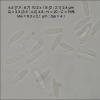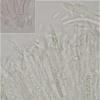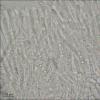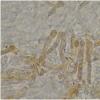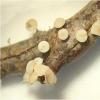
29-03-2017 09:10
Garcia SusanaHola,Está recogida en abril de 2015. La tenía si

28-03-2017 00:09
Patrice TANCHAUDBonsoir,récolte réalisée en milieu sablonneux.

28-03-2017 11:12
 Blasco Rafael
Blasco Rafael
Hola, a ver si Ustedes me pueden ayudar con esta m

27-03-2017 22:00
 Bernard CLESSE
Bernard CLESSE
Sur branche très pourrie et imbibée de feuillu (

27-03-2017 21:13
 Bernard CLESSE
Bernard CLESSE
À nouveau rien au niveau microscopie pour ce qui

27-03-2017 20:12
 Bernard CLESSE
Bernard CLESSE
Sur moquettes (crottes) de chevreuil. J'ai regard

26-03-2017 23:32
Elsa SousaHi,Cudoniella/Mollisia/what?Sp. 9.6-14.6 x 2.8-3.3

26-03-2017 23:16
 Matthias Mann
Matthias Mann
Dear Members, do you know, what I have here?Greeti
Lachnum fasciculare ?
Garcia Susana,
29-03-2017 09:10
Está recogida en abril de 2015. La tenía sin identificar.
Como datos:
Ascas: 42-53 x 4.2-4.8 um y tienen croziers
Paráfisis: 60-80 x 4.5-5.5 um, septadas (2septos), multigutuladas, que sobrepasan hasta 25um a las ascas.
Pelos: finamente verrugosos, septados, multigutulados, de 30-72 x 4-5.5um. Algunos de ellos pigmentados. En su mayoría algo ensanchados en el ápice.
Creo que puede ser Lachnum fasciculare, pero me gustaría confirmarlo.
Gracias y un saludo
Susana
Hans-Otto Baral,
29-03-2017 09:38

Re : Lachnum fasciculare ?
Dear Susana
great section! In my opinion this is L. pudibundum: because the hairs are rather short and the asci are without croziers. The central ascus base shows a basal protuberance that is not joined with the basal cell. The two left ascus bases are without this protuberance.
What was the substrate, a wooden twig?
Zotto
great section! In my opinion this is L. pudibundum: because the hairs are rather short and the asci are without croziers. The central ascus base shows a basal protuberance that is not joined with the basal cell. The two left ascus bases are without this protuberance.
What was the substrate, a wooden twig?
Zotto
Garcia Susana,
29-03-2017 10:15
Re : Lachnum fasciculare ?
Hola Zotto,
Es cierto que lo que se ven son protuberancias y no croziers. He revisado el resto de imagenes y no he visto croziers, solo protuberancias. Así que, confiando en tu experta opinión, la archivo como L. pudibundum.
Respecto al sustrato, yo diría que probablemente sea alguna ramita de arbol, pero no tengo la muestra guardada asi que no lo puedo asegurar. Te pongo otra foto más por si te sirve para identificarlo.
Gracias de nuevo
Saludos
Susana
Es cierto que lo que se ven son protuberancias y no croziers. He revisado el resto de imagenes y no he visto croziers, solo protuberancias. Así que, confiando en tu experta opinión, la archivo como L. pudibundum.
Respecto al sustrato, yo diría que probablemente sea alguna ramita de arbol, pero no tengo la muestra guardada asi que no lo puedo asegurar. Te pongo otra foto más por si te sirve para identificarlo.
Gracias de nuevo
Saludos
Susana
Hans-Otto Baral,
29-03-2017 10:19

Re : Lachnum fasciculare ?
Yes, this looks like from an angiosperm tree.


